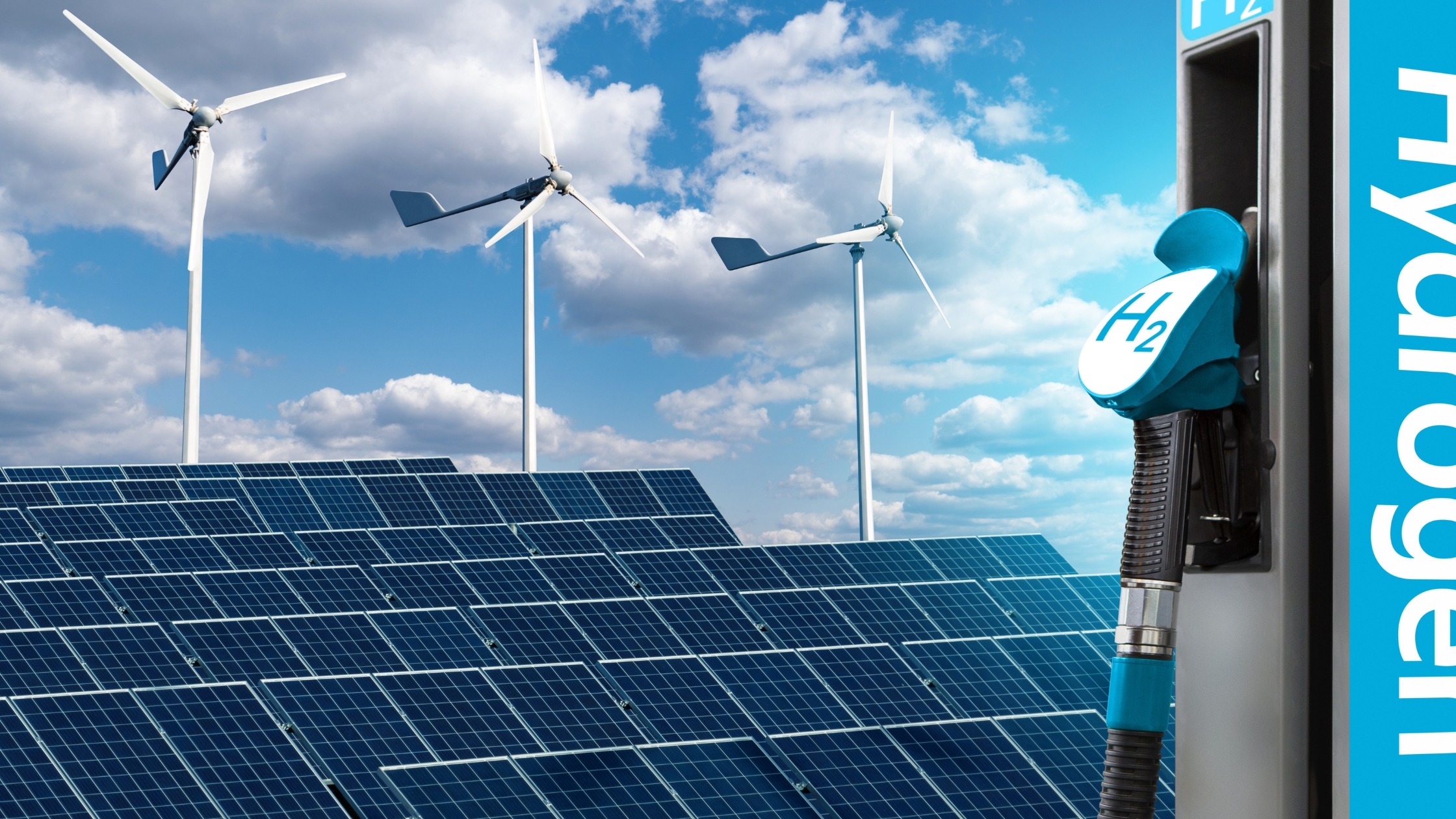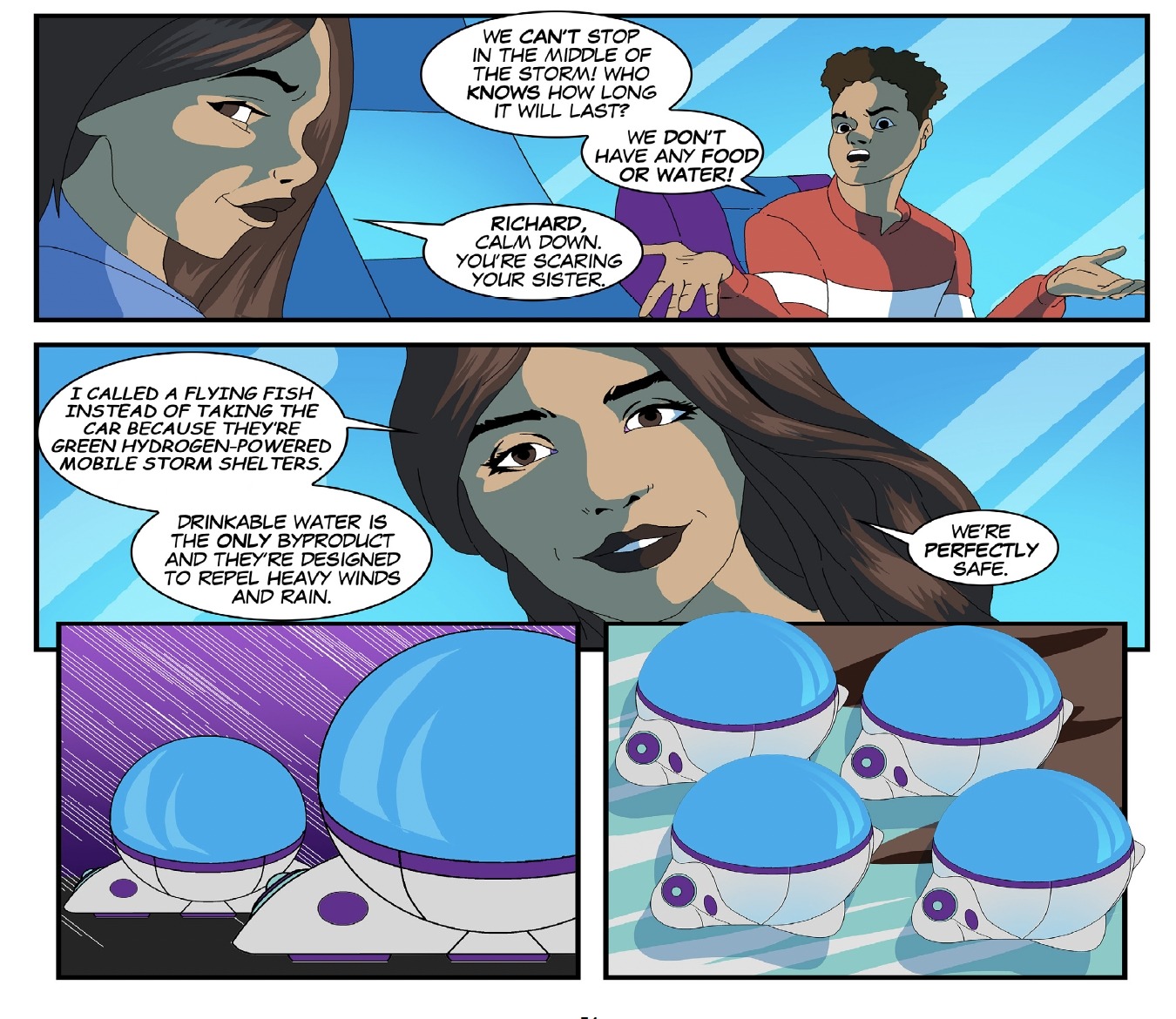
14 Feb Start Small: Green Hydrogen for Electric Vehicles in the Caribbean
Transforming the transport sector using renewable energy from solar, wind, geothermal, biomass and waves is now critical for sustainable development. And green hydrogen, produced by splitting water (electrolysis) using renewables-generated electricity, has become a big part of that conversation.
Dynamic futurist, architect, award-winning inventor, car enthusiast and entrepreneur Sally Dominguez worked with groups of thinkers who created intriguing moonshots for electric vehicles at the Pivot Event. Among Sally’s inventions is the Rainwater HOG, “a water storage tank that works like a water-filled building block”. She has also judged sustainable design awards on Australian television and “car of the year awards with a focus on design and sustainable drivetrains.”
Dual benefit of green hydrogen as transport fuel in the Caribbean
“Our group by the end of the session had come up with several different scales of vehicle running on electricity…it was a fuel cell situation with green hydrogen created from wave, solar and wind.” [Sally Dominguez]
Going into the workshop sessions Sally was excited about the “renewable and abundant natural resources” in the Caribbean that could be used for zero emissions energy. But the sessions pushed her thinking even further.
Declaring that she was already passionate about green hydrogen, she says working with the “open-minded” thinkers in the groups she facilitated helped her drill down on what it would take to have a “really resilient, almost disaster-proof system”.
The only by-product of burning hydrogen is potable water, hence, in addition to production from renewable energy sources alone, Sally notes that with green hydrogen, “you have the benefit of being able to create water, which as [power] lines go down and [electrical] grids fail is the first and most important need.”

Modular hydrogen-powered vehicles
The hydrogen-powered vehicle concepts developed by her groups and featured with other moonshots in Pivot: The Future Makers can all be considered modular, a thread that runs through Sally’s work. One maritime solution, the Sea Wee, is described as, “a rigid body public transportation vehicle capable of traversing the entire island chain in under six hours” with supporting “likkle wee” (smaller detachable) vehicles to shuttle passengers from each island to the larger, ocean-based Sea Wee. The Flying Fish is described as a self-piloting vehicle that can traverse over land and water, transporting up to 12 people if four units are linked and serving as a storm shelter for its passengers with a protective dome and potable water.
Green hydrogen roadmap
So exciting were the concepts and the feedback from the participants at the Pivot Event that Pivot organiser, the Inter-American Development Bank (IDB) invited Sally to develop a green hydrogen roadmap for the region and she accepted.
She knew she wanted to focus on a circular approach, reusing waste water from cruise ships, sewerage and other sources to both generate green hydrogen and get rid of waste. But a slightly different angle emerged as she describes,
“I found a research piece out of Houston University which was using solar to create hydrogen from salt water and for me this was the key to everything because [the Caribbean is made up of] islands, surrounded by salt water; [the region has] rising sea levels; and so this beautiful circular sequence of [using] solar and ultimately offshore wind to make green hydrogen and with the salty brine that’s leftover we keep it and we create locally made sodium ion batteries (salt batteries) so that when we want to store our energy we actually have a locally made, low cost solution.”
Sally points out that lithium, used in lithium-ion batteries normally used to power electric vehicles, has gone up more than 500 percent within a year and the solution described in the research is near commercialisation. She says it could be, “nuanced and improved by local innovators [while making] each island self-sufficient and [getting] rid of diesel for good.”
Decentralised production
But she isn’t envisioning large centralised power stations in a few countries with hydrogen being shipped to others, but miniature green hydrogen power points for each country. She believes these would be more resilient to disaster and allow communities to have “the power in their own hands.”
She paints a picture of onshore and offshore “nodes” for production and storage of green hydrogen as well as salt batteries. Although she admits that storage of green hydrogen can be challenging (it must be stored at -252 degrees celsius), she revealed that there is yet another new technology that would make it more feasible for the Caribbean.
Excitedly, she says,
“ I just fervently wish that we could have the Caribbean being the first to implement this…[everyone] is still so focused on methane reformation and natural gas [to generate hydrogen] and all these things that still have a carbon footprint and we could just leap over everything and island by island become totally [fossil fuel] independent.”
And she sees no reason to delay, advocating using the characteristic size of Caribbean nations as an advantage and starting small.

